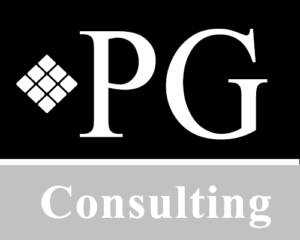5 Essential Steps to Building a Future-Ready Workforce
The landscape of business is characterized by constant change, driven by rapid technological advancements, evolving market demands, and shifting global dynamics. For organizations to not just survive but thrive, mere adaptation is no longer enough. The imperative is to proactively cultivate a future-ready workforce – a team equipped with the skills, mindset, and resilience to navigate uncertainty and seize new opportunities.
Building such a workforce isn’t a one-time project; it’s a continuous strategic endeavor. Here are 5 essential steps your business must take to cultivate the talent pipeline of tomorrow.
Step 1: Assess Your Current & Future Skills Landscape
Before you can build, you must understand what you have and what you’ll need.
- Identify Core Competencies: What skills are absolutely critical for your current operations?
- Forecast Future Needs: What skills will be vital 1, 3, or 5 years from now, considering technological shifts, market trends, and your own strategic growth plans? This involves anticipating new roles and the evolution of existing ones.
- Pinpoint the Skills Gap: Compare your current workforce’s capabilities with future requirements. This analysis reveals where your skills gap lies, indicating where talent development efforts must be concentrated.
PG Consulting’s expertise in workforce planning and HR audits can provide a comprehensive assessment, identifying both current strengths and future needs to give you a clear roadmap.
Step 2: Invest in Continuous Employee Training & Upskilling
Once you know your gaps, fill them. Learning should be an ongoing journey, not a one-off event.
- Upskilling: Focus on enhancing existing employees’ skills to keep them relevant with evolving technology and industry best practices.
- Reskilling: For roles that may be significantly impacted by automation or new demands, provide opportunities for employees to learn entirely new skill sets, enabling them to transition into different critical functions within the organization.
- Diverse Training Methods: Utilize a mix of formal employee training programs, mentorship, e-learning platforms, workshops, and on-the-job experience.
Our human capital development programs at PG Consulting are tailored to equip your team with the precise skills needed for the future, transforming potential into performance.
Step 3: Foster a Culture of Learning & Adaptability
Training programs alone aren’t enough. The environment must encourage growth and embrace change.
- Promote Curiosity: Encourage employees to explore new ideas, challenge the status quo, and experiment.
- Embrace Feedback: Create a safe space for constructive feedback, allowing individuals and teams to continuously learn and improve.
- Support Risk-Taking: Acknowledge that learning involves mistakes, and create a culture where calculated risks are encouraged, fostering innovation and organizational agility.
- Leadership Buy-In: Leaders must model a commitment to continuous learning and be champions of adaptability. This significantly boosts employee engagement in development initiatives.
Step 4: Implement Robust Succession Planning
A truly future-ready workforce has clear pathways for progression, ensuring continuity and internal talent flow.
- Identify Key Roles: Pinpoint critical positions that are essential for the organization’s long-term success and stability.
- Nurture Internal Talent: Identify high-potential employees and provide them with targeted talent development opportunities, mentorship, and exposure to prepare them for future leadership roles.
PG Consulting assists organizations in designing comprehensive succession planning frameworks that identify and nurture tomorrow’s leaders from within your ranks.
Step 5: Leverage Data for Strategic Workforce Planning
In the digital age, informed decisions are data-driven decisions.
- HR Analytics: Utilize HR data to analyze trends in employee performance, turnover, skills distribution, and development needs.
- Predictive Modeling: Use insights to forecast future workforce requirements, anticipate challenges, and proactively plan for resource allocation.
- Strategic HR Decision-Making: Data insights empower HR to move beyond administrative tasks and become a strategic partner in overall business growth, aligning human capital development with broader organizational goals.
Our HR consulting services help businesses implement robust HR analytics and workforce planning strategies, ensuring your talent decisions are always aligned with your strategic objectives.
Case Study 1: Google’s Proactive Approach to Future Skills
Google is a prime example of an organization that consistently leverages data and foresight to build a future-ready workforce. Recognizing the ever-evolving tech landscape, Google doesn’t just react to skill shortages; they proactively anticipate them.
For instance, years before Artificial Intelligence and Machine Learning became mainstream, Google was already heavily investing in developing these capabilities within its workforce. They did this through:
- Internal Training Programs: Creating rigorous internal courses and certifications for existing employees to upskill in AI/ML.
- Strategic Hiring: Recruiting top talent with expertise in these nascent fields.
- Research & Development: Investing heavily in internal R&D, which naturally cultivated a workforce immersed in cutting-edge technologies.
This proactive approach, driven by deep data analysis and a clear vision of future technological needs, allowed Google to maintain its competitive edge and innovate rapidly, becoming a leader in AI and related fields rather than playing catch-up. Their commitment to continuous learning and leveraging internal talent was key to their success in anticipating and shaping future skill demands.
Case Study 2: Unilever’s “Future Fit” Workforce Planning
Unilever, a global consumer goods giant, faced the challenge of preparing its vast and diverse workforce for a rapidly changing business environment, including digital transformation and evolving consumer demands. They developed a “Future Fit” workforce planning model to proactively address future talent needs.
Key aspects of Unilever’s approach include:
- Scenario Planning: Instead of simply reacting to current conditions, Unilever develops multiple plausible future scenarios to understand potential shifts in market demands, consumer behaviors, and technological advancements. This allows them to anticipate the skills required for various eventualities.
- Strategic Skill Identification: By identifying the core skills needed for these future scenarios, Unilever can strategically invest in targeted learning and development programs, internal mobility initiatives, and specific hiring to ensure they have the right talent in place when needed.
- Continuous Learning & Adaptation: Unilever emphasizes a culture where employees are continuously learning and adapting. This involves providing access to relevant training, promoting cross-functional collaboration, and encouraging employees to take ownership of their own development.
Through their “Future Fit” model, Unilever successfully navigated the challenges of digital transformation by proactively identifying and developing key digital capabilities. This foresight enabled them to stay ahead of the curve and capitalize on new opportunities, demonstrating the power of a long-term, scenario-based approach to workforce planning.
Build Your Future-Ready Workforce Today
The future of work is already here, and organizations that invest in their people now will be the ones that thrive tomorrow. By systematically assessing skills, investing in employee training, fostering a learning culture, planning for succession, and leveraging data, you can build a workforce that is not just resilient but truly transformative.
Ready to start building a workforce that can tackle any future challenge? Explore PG Consulting’s comprehensive Human Capital Solutions and discover how our expertise in talent development can empower your organization: pgconsultinguk.com





